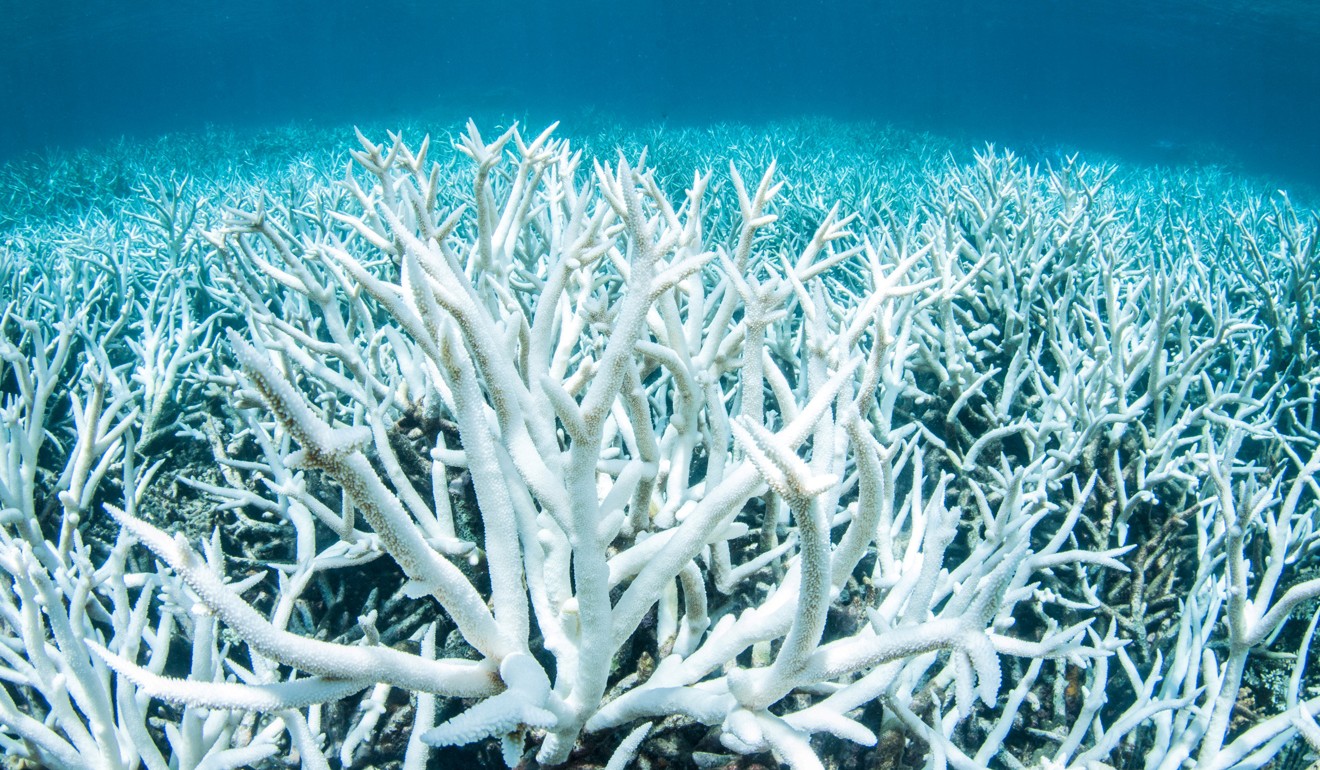
Despite more extreme weather, Hong Kong’s coral reefs are in good condition, study finds
- Overall condition of coral at 33 seabed areas was good, a two-year study showed, although bleaching was seen at six sites in summer
- Monitoring of sites should continue and be more frequent, especially those with bleaching, government says
Global warming has had little effect on Hong Kong’s coral colonies despite an increase in extreme weather events in the city, a joint study by the government and four universities has found.
The overall condition of coral at 33 seabed areas was good, the two-year study showed. But coral bleaching was seen at six sites in summer, including at two where it was considered serious – Pak Lap Tsai in Sai Kung and A Ye Wan at Ping Chau, an outlying island.
More than half of the colonies at the two sites, or about 58 and 55 per cent respectively, suffered from the phenomenon, where corals are stressed by changes in conditions such as temperature, light or nutrients and expel the symbiotic algae living in their tissues, causing them to turn white.
Some corals can survive bleaching, but they are under more stress and may die.

According to the survey findings, released on Wednesday, most of the coral at the six sites fully recovered after one to three months. Only 3.3 per cent eventually died.
“Low salinity in the water due to heavy rainfall in the summer of 2017 was likely the cause,” said Qiu Jianwen, a biology professor at Baptist University, who led the study.
“Another reason could be the type of coral growing in Pak Lap Tsai, namely Acropora. It has less antibodies and it is harder for it to recover. Acropora was seen less in other sites.”

There has been mass bleaching at coral reefs around the world over the past two decades – notably in 2016 at the Great Barrier Reef, where warmer water temperatures were blamed.
“However, in the case of Hong Kong, warmer weather seems more favourable for certain types of coral to reproduce, and we see signs of migration of coral from some tropical areas,” Qiu said.
“Of course, climate change can still lead to extreme weather that harms the ecosystem. We should stay alert.”
In Hong Kong, there has only been mass bleaching once, in 1997 because of a strong El Niño effect, a climate pattern linked to warmer sea surface temperatures across the eastern equatorial Pacific Ocean.

Coral supports a lot of marine life, Qiu said, including sponges, starfish and clams which attach themselves to reefs, covering them almost entirely. Thousands of species of fish also take to the reef.
The Agriculture, Fisheries and Conservation Department said the monitoring should continue and be more frequent and thorough, especially for sites with bleaching. It said it would also collaborate with research institutes on restoring coral.

Hong Kong has already had more hot nights, meaning temperatures above 28 degrees Celsius (82 degrees Fahrenheit), in 2019 than any other year since records began in 1884, according to Hong Kong Observatory data. There were 45 by the end of September compared with an average of 27 days for an entire year.
There have been 32 hot days, or temperatures above 33 degrees. The record is 38, reached in 2016.
The weather forecaster said extreme weather events such as super typhoons Hato and Mangkhut were expected to be more frequent in the coming years.

